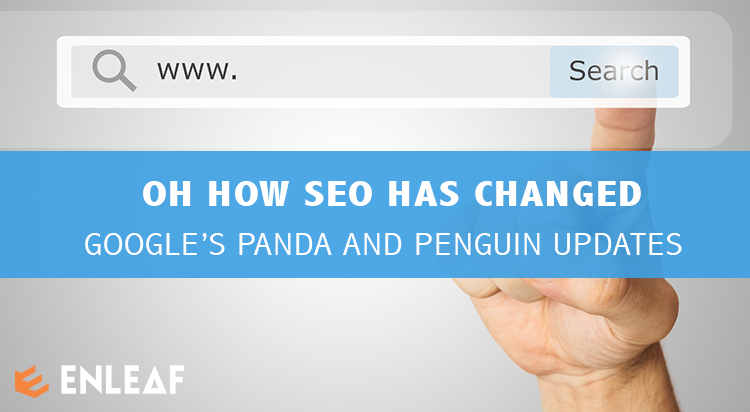
In the last decade or so, one word which has engaged and baffled online publishers has been SEO or Search Engine Optimization. As a high page rank on Google meant higher site visits and more traffic, it was inexorable not to work on the optimization of a particular site. But Google’s Panda and Penguin updates promise to make all of this a thing of the past as it has transformed the rudimentary rules of SEO.
In order to rank websites, Google made use of its Page rank algorithm and formulated the highly sought after websites list. This went on for years and if you had a car care website with links to all the major car producers and dealers, Google would promote the rank of your website. SEO used to be nothing more then linking your site to other sites with similar interest. Popularity to linked sites was a bigger fortune cookie than linking them to less popular sites or blogs. So, a link to BMW attracted more attention than a local car shop website.
Other than web links, the other two aspects that changed the future of your site were the content on the site and the ‘Title tag’. The criterion decided by Google for the former one required the content to be unique and free from plagiarism. In case of duplicity, Google determined the original author of the site content and penalized the offending site by lowering its page rank. Title Tag played its part by informing Google and the users what the site or the webpage was all about. Sorting and ranking web pages on the basis of keyword searches was made possible this way and it helped Google tremendously.
This unique method of ranking webpages worked for Google as it continued to deliver excellently by offering the right search results quickly Google flourished for many years and its market share rose to a whopping 65%. But lately, other search engines like Bing have entered the ring and Google’s magic started to bore. Almost running parallel with this was the increasing insight of web publishers who found out ways to dodge various algorithms innovated by Google. To quote an example, in 2011, JC Penney allegedly became a chart buster by buying links from other sites across the internet and fooling Google’s algorithms and crawlers.
As gaming the search engines became more and more rampant Google cracked down on such tactics by unleashing first a Panda and now a Penguin. No not animals but algorithm updates that penalize site with paid links, spammy links and evidence of over optimization. Additionally these updates come with a brand new concept added to its evaluation methods.
These updates display webpages based upon an expanded range of predetermined quality signals. It ranks them on the basis of how the end user treats a particular site and neglects how they link with sites of similar content.
In determining the quality of a particular webpage, Google now deciphers various user signals, ‘Time on Site’ being the first one of them, it then decides the end user experience gained from a site based upon these metrics. For measuring the percentage of people leaving the site without further engagement ‘Bounce rate’ was launched. Now, if people recommend a site with +1s, a social signal, the webpage gets a green signal from Google. ‘Page views per visit’ is also analyzed to check user navigation throughout the site.
Branded Search Traffic is another of the ways that Google has started looking at webpages now. This equates to calculating number of users searching for a particular website. Therefore, Google will favor your site if your site name is ‘PotsnPlants’ and to reach you, an increasing number of users are searching the web with the keyword ‘pots and plants’.
No longer is just content king, Google now demands more and wants the content to be of superior quality. For this, Google has defined metrics and algorithms which check the quality of the content that users go through. All of these different parameters judge user behavior and hence evaluate page rank with enhanced accuracy.
Following Google’s footsteps has become the best way to rank high on its search engine. Practicing Black Hat techniques have become passé and it is wise to implement tips suggested by Google for a high quality website, increased site traffic and ultimately an improved page rank.
Adam Chronister is co-founder of Enleaf, an award winning Web Design and Internet Marketing Firm. You can find him on Facebook Facebook and Twitter.
